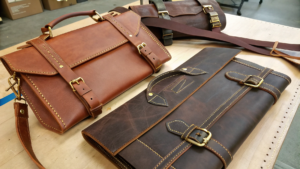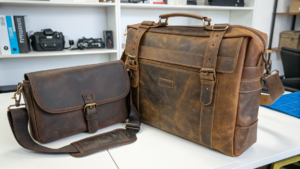Are Your Enamel Pins Secretly Ruining Your Clothes?
Love your enamel pins but worried about damaging your favorite jacket? Many of us want to show off our personality without creating unsightly holes or snags. What if you could wear all your pins without any worry?
You can wear enamel pins without ruining your clothes by understanding fabric types, choosing strategic placement, using alternative pin backs, and practicing gentle handling. These simple steps protect your garments from punctures, tears, and stretching, letting you express yourself safely and stylishly.
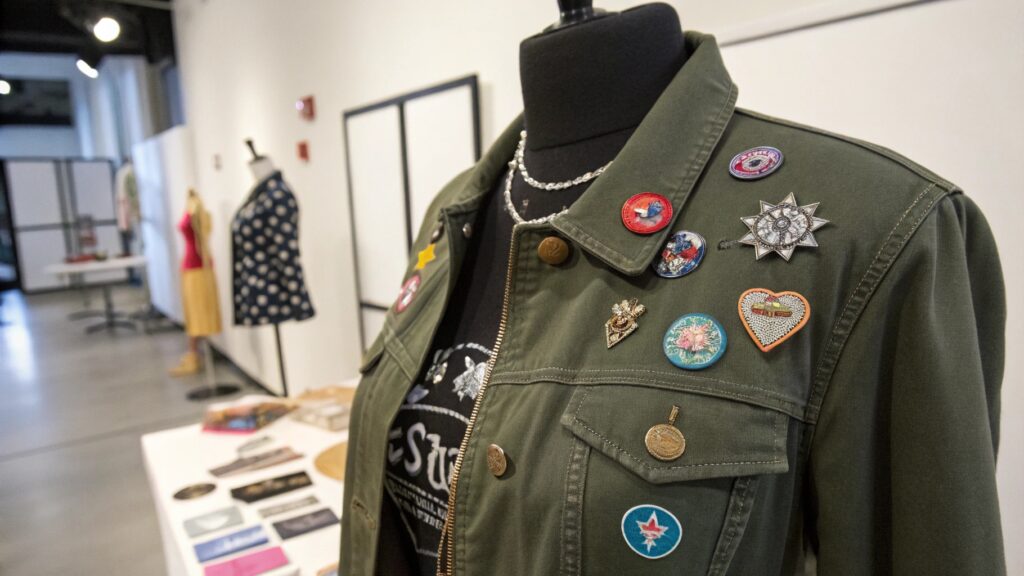
I've learned from countless experiences that a small detail like how you attach a pin can make a big difference in keeping your cherished items looking great. It's about being smart with your style choices.
How to Wear Pins Without Ruining Clothes?
Are you tired of seeing pinholes and stretched fabric on your favorite outfits? It's a common problem when styling with enamel pins. So, what's the secret to keeping your clothes pristine while still rocking your collection?
To wear pins without ruining clothes, focus on fabric strength, strategic placement, and proper pin backs. Avoid delicate materials and high-friction areas, opting for sturdy fabrics like denim or canvas. Using locking or plastic pin backs can also help distribute pressure and prevent damage.
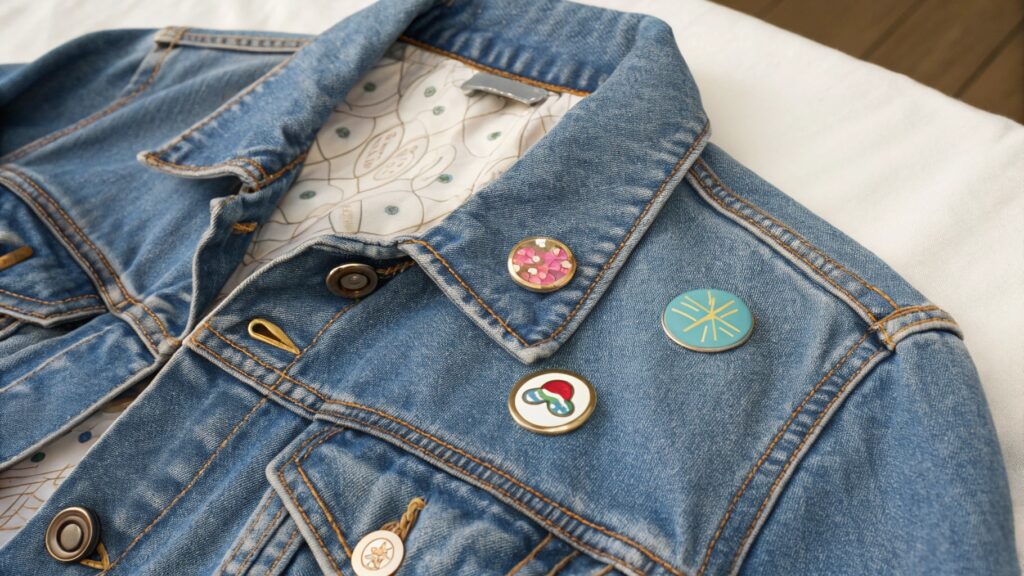
From my experience, the right approach makes all the difference. It's like finding the perfect spot for a picture frame; you want it to be secure and look good without harming the wall.
Which fabrics are best for wearing enamel pins safely?
Choosing the right fabric is the first step to protecting your clothes from pin damage. Sturdy, tightly woven fabrics are your best friends when it comes to enamel pins. Think denim jackets, canvas tote bags, thick wool coats, or sturdy backpacks. These materials have a dense weave that can better withstand the small puncture from a pin. They are less likely to show permanent holes or unravel over time. For example, I always recommend denim jackets as a go-to for pin enthusiasts because the fabric is durable and forgiving. It can handle multiple pins without noticeable wear. This is in contrast to delicate materials. Fabrics like silk, chiffon, cashmere, or thin knits are more prone to damage. Their loose weave or fine threads can easily snag, stretch, or develop permanent holes when pierced. Always consider the material. It helps ensure your pins enhance your outfit, rather than harm it.
Where is the safest place to attach pins on clothing?
The placement of your enamel pins is crucial for preventing damage. Avoid areas that experience a lot of friction or stretching. These include collar edges, sleeve cuffs, pocket flaps, and areas around seams. Movement in these spots can cause the pin to shift, leading to fabric wear or loosening. Instead, opt for more stable, less stressed areas. Good spots include the main body of a denim jacket, the center of a backpack, or the front panel of a sturdy tote bag. For hats, the stiffer parts of the brim or crown are better. When pinning to shirts, choose areas where the fabric has some reinforcement, like a button placket, but avoid thin single layers. The goal is to find a spot where the fabric is strong and the pin will remain relatively still. This minimizes stress on the material. It helps keep your clothes looking good.
What are alternative pin backs that prevent fabric damage?
Traditional rubber or metal butterfly clutches can sometimes pull or stretch fabric, especially if the pin is heavy or the fabric is delicate. To combat this, consider using alternative pin backs. Locking pin backs, which often have a small screw or spring mechanism, provide a much more secure hold. This prevents the pin from wiggling, which reduces friction on the fabric. Another great option is a plastic or silicone disc backer1. These larger, flat backings distribute the pressure of the pin over a wider area. This reduces the direct stress on a single point of the fabric. For very delicate items, you can even sew a small piece of felt or a patch onto the inside of the garment where you plan to place the pin. This creates a reinforced layer. It protects the main fabric from direct contact with the pin needle. These small changes make a big difference.
What is the Best Way to Wear Enamel Pins?
Are you looking for the ultimate guide to styling your enamel pins effectively and safely? It's not just about sticking them on; it is about making them look great while keeping your clothes intact. So, what is the most effective approach to showcasing your pins?
The best way to wear enamel pins involves a blend of aesthetic appeal and garment protection. This means strategically grouping pins, considering the visual impact on your outfit, and always prioritizing the integrity of the fabric through smart placement and appropriate pin backs for long-term wear.
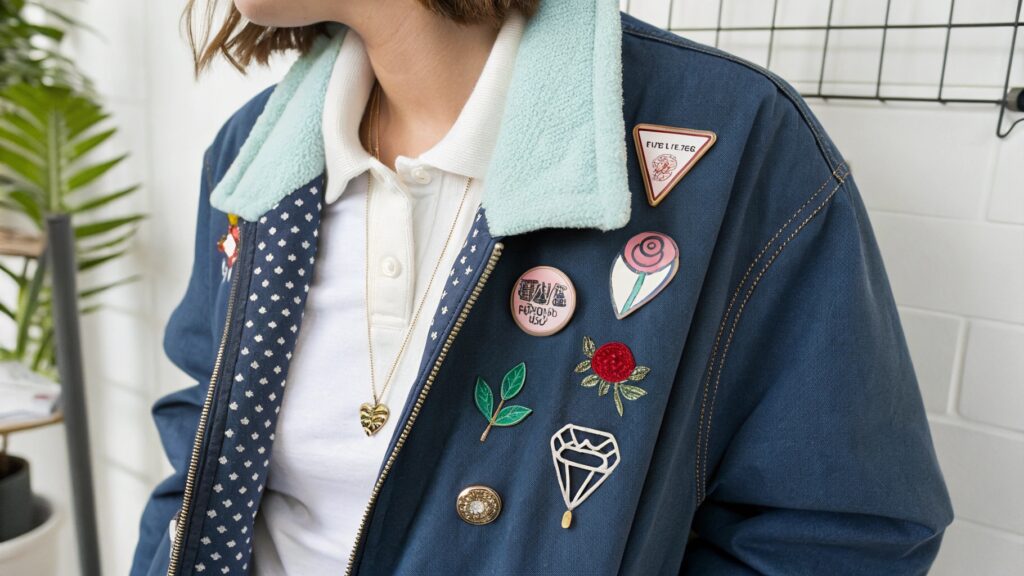
I've always believed that personal style should not come at the expense of practicality. Your accessories should enhance, not detract from, your favorite pieces.
How can you style multiple enamel pins effectively?
When styling multiple enamel pins, think of them as a curated collection, not just random attachments. Instead of scattering them haphazardly, try grouping them together to create a focal point. For example, arrange pins with a similar theme or color palette in a cluster on one side of a jacket lapel or the top corner of a tote bag. This creates a cohesive look. It also concentrates the pinholes in one area, rather than spreading them across the garment. Another effective technique is to use varying sizes of pins to add visual interest. Place larger pins at the bottom of a cluster and smaller ones towards the top. This creates a sense of balance. This helps the arrangement feel intentional. I have seen clients create impressive displays on their backpacks. They turn them into personal art pieces. This makes them a statement.
What is the optimal visual balance for pins on an outfit?
Achieving optimal visual balance2 with enamel pins means considering the overall look of your outfit. Avoid placing too many pins in one small area, as this can make it look cluttered and draw too much attention. Instead, aim for strategic distribution that complements the garment’s design. For instance, if you are wearing pins on a jacket, consider placing a few on the lapel, one on a pocket, and perhaps a larger grouping on the back. This spreads the visual weight. It prevents any one area from looking overloaded. Think about the colors and shapes of your pins in relation to your clothing. A brightly colored pin on a neutral background will pop. A subtle pin on a busy pattern might get lost. My rule of thumb is that if it looks unbalanced, it probably is. Sometimes, less is more. A few well-placed pins can be more impactful than a dozen.
How do you match pin style with outfit aesthetic?
To truly master wearing enamel pins, consider how their style aligns with your overall outfit aesthetic. For a casual, everyday look, pop culture pins, quirky designs, or personal inside jokes work well on denim jackets, canvas bags, or hats. For a more refined or semi-formal outfit, opt for minimalist pins, metallic designs, or those with subtle motifs. These can add a touch of personality without clashing with a sophisticated look. For example, a sleek geometric pin can complement a blazer, while a cartoon character pin might be better suited for a graphic tee. The key is to ensure the pin enhances your style, rather than fighting it. I advise my clients to think about their brand's image when creating custom pins. The pin should reflect the brand's essence. This ensures it resonates with recipients. This makes the pin an extension of the overall message.
How to Make an Enamel Pin Stay On?
Are your favorite enamel pins constantly falling off or spinning out of place? It is frustrating when your stylish accessories do not stay put. So, what are the best methods to ensure your enamel pins remain securely fastened?
To make an enamel pin stay on, use secure pin backs like locking clutches or rubber stoppers for everyday wear, consider reinforcing delicate fabrics with backing materials, and always push the pin through a stable, thick part of the fabric to ensure a firm grip and prevent movement.
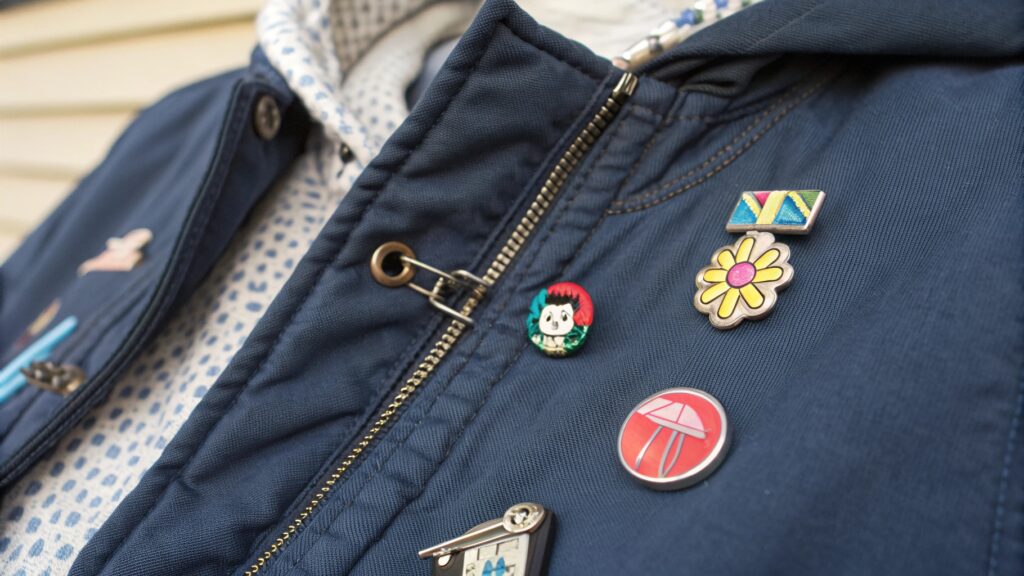
I have always believed in the importance of durability, whether it is for a product or a fashion accessory. A well-secured pin simply lasts longer and causes less hassle.
What are the most secure types of pin backs?
The type of pin back you use largely determines how securely your enamel pin stays on. The most common are rubber clutches and metal butterfly clutches. Rubber clutches, often soft and pliable, offer a decent grip for everyday wear and are comfortable against the skin. However, they can sometimes loosen with movement. For maximum security, locking pin backs are superior. These typically have a small spring mechanism or a screw that tightens onto the pin's needle, providing a much firmer grip that resists accidental pulling or slipping. They are ideal for pins worn on items that see a lot of activity, like backpacks or frequently worn jackets. I always recommend upgrading to locking backs for any pin that holds sentimental value. It is a small investment. It offers peace of mind.
How can you reinforce fabric for a better pin grip?
For fabrics that are too thin or loosely woven to hold a pin securely on their own, you can add reinforcement. One effective method is to place a small piece of felt or thin fabric on the inside of the garment where the pin will be. Pierce the pin through both the garment fabric and the felt. This provides a thicker, more stable base for the pin back to grip onto. This distributes the pressure more evenly. Another option is to use an adhesive fabric patch designed for pin display. These patches can be ironed or sewn onto the garment. They provide a dedicated, sturdy area for your pins. This completely protects the underlying fabric. It prevents any damage. I have seen this technique used effectively on thinner jackets. It transforms them into perfect canvases for pins. This ensures everything stays in place.
What are proper techniques for attaching and removing pins?
Proper technique when attaching and removing pins also plays a crucial role in their security and preventing fabric damage. When attaching a pin, push the needle through a relatively thick and stable part of the fabric. Avoid pushing it through loose threads or very thin sections. Make sure the pin back is pushed on firmly. You should feel a slight click or resistance. This indicates it is securely fastened. To remove a pin, do so gently. Do not yank it out. Hold the pin back with one hand. Pull the pin out slowly and straight. Pulling at an angle or too quickly can stretch or snag the fabric fibers. Always check the pin's position regularly. Adjust it if it starts to shift. This simple care extends the life of both your pins and your garments. It ensures your style remains intact.
Conclusion
Wearing enamel pins without damage comes down to smart choices: selecting the right fabric, strategic placement, and using secure pin backs. With a little care, you can enjoy your pins and keep your clothes looking great.



